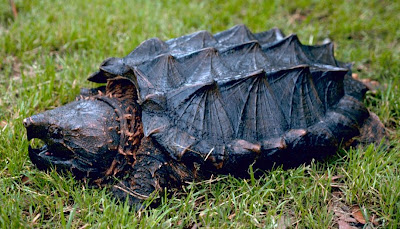Unusual and Unique Armored Animals - Best in Defense
Armored
Animals shows how the bodies of some animals are saved from being a
meal for predators best pet insurance by such physical traits as tough
skin, shells, spines, or horns.
Indian Rhinoceros
The
Indian Rhinoceros is also called Greater One-horned Rhinoceros and
Asian One-horned Rhinoceros and belongs to the Rhinocerotidae family.
Listed as a vulnerable species.These massive beasts have some noticeable
physical differences from their African relatives. Their segmented
hide looks like a formidable coat of natural body armor. It functions a
bit like one also: Flexible skin between the thicker hide “plates”
allows them to shift as the rhinoceros moves.
Thorny Devil
The
thorny devil, also known as Thorny Dragon, Thorny Lizard, or the
Moloch, is a small species of lizard native to Australia with there
being no other lizard like the thorny devil anywhere in the world.
The thorny devil is a small lizard with the average adult thorny devil
only growing to around 20cm in length and weighing about the same as
the average mouse. The thorny devil is best known for having an
extremely spiky looking appearance and the thorny devil can blend well
into the vast Australian desert due to the colour of the thorny devils
skin.
The body of the thorny devil has a very rigid structure which aids the
thorny devil in collecting water. Amazingly, in between the cone
shaped spikes of the thorny devil, little channels form along the
thorny devils body which enables the thorny devil to collect water from
any part of its body which is then transported to the mouth of the
thorny devil.
The
Thorny Devil is on average about 20 cms long, and they feed on a wide
variety of ants. An intimidating array of spikes cover the entire upper
side of the body, these thorny scales are a defence against predators.
Camouflage and deception may also be used to evade predation. Despite
its appearance, it is totally harmless.
Three Banded Armadillo
Animals
have individual abilities to defend themselves against
predators, but the Three Banded Armadillo has an extremely unique method
of protection. He doesn’t run, camouflage himself or fight.
He rolls into an armored ball that will snap shut like a trap
when anything threatens its life. When the threat has passed
he will unroll and go about his business - his armor quickly
available for the next danger he faces.
The
Southern Three-banded Armadillo (Tolypeutes matacus), also called the
La Plata Three-Banded Armadillo, is an armadillo species from South
America. Its range is extensive; it is found throughout Argentina,
Brazil, Paraguay and Bolivia. The Brazilian Three-banded Armadillo
(Tolypeutes tricinctus) is an armadillo species endemic to Brazil. It is
one of only two species of armadillo (the other is the Southern
Three-banded Armadillo) that can roll into a ball. It has suffered a 30%
decline in population in the last 10 years.
The
skin is modified to form a double-layered covering of horn and bone
over many of the surfaces. Three-banded armadillos are blackish brown in
color. Most animals have three moveable bands, although some possess
only two, and others may have four. Members of the genus Tolypeutes are
the only armadillos that can completely enclose themselves in their
own shell by rolling into a ball.
Pangolin
A
pangolin, also scaly anteater or Tenggiling, is a mammal of the order
Pholidota. There is only one extant family (Manidae) and one genus
(Manis) of pangolins, comprising eight species. Pangolins are nocturnal
animals, and use their well-developed sense of smell to find insects.
The long-tailed pangolin is also active by day. Pangolins spend most of
the daytime sleeping, curled up into a ball.
The
pangolin (also called the scaly anteater) is an unusual mammal that is
covered with tough, protective scales made of keratin. The pangolin
has scales that cover everything except the belly, snout, eyes, ears,
and undersides of the limbs. The pangolin has short legs with huge
claws; it uses its claws to dig into ant hills and termite mounds. The
sticky tongue is up to 27 inches long. The pangolin ranges from 24-62
inches long. The pangolin has no teeth. The long tail is prehensile;
the pangolin can even hang from its tail.
Alligator Snapping Turtle
The
alligator snapping turtle (Macrochelys temminckii) is one of the
largest freshwater turtles in the world. It is a larger relative of the
common snapping turtle. Alligator snapping turtles are the largest
freshwater turtles. They weigh between 155 and 175 pounds (70 to 80 kg).
They are characterized by three large, pronounced ridges, or keels,
that run from the front to the back of the carapace. With powerful jaws
and a large head, they are unique among snapping turtles for having eyes
on the side of the head. The alligator snapping turtle looks very
primitive and has been called the dinosaur of the turtle world.












































